I did some testing and tried some things out and decided to stay with the 40kHz for now.
I assume that the 40kHz 60W ultrasonic transducer is optimized for this frequency and so it's bad at moving at frequencies above and below 40kHz. There are also ultrasonic transducers available that are rated for other frequencies and I think the limited frequency range of the 40 kHz transducers is the reason why they exist.
While other transducers exist they are not quite common and so you have to buy them in china with long shipping times - and for this reason, I will not use them for now.
I will also live with the quite long distance that the stream needs before it splits into droplets. While it's wasting some space it's also no problem to move the ink return tube some more centimeters away from the nozzle.
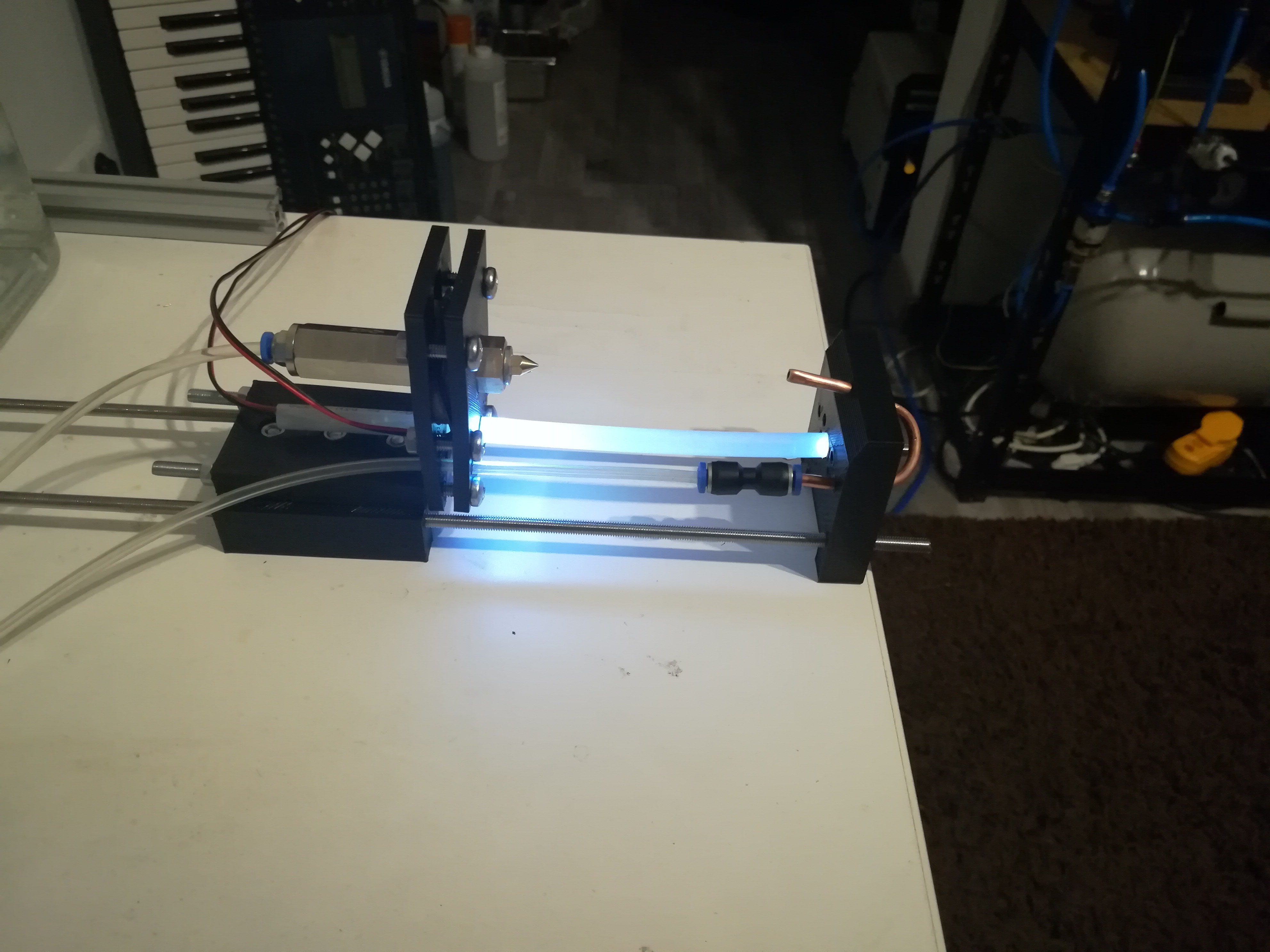
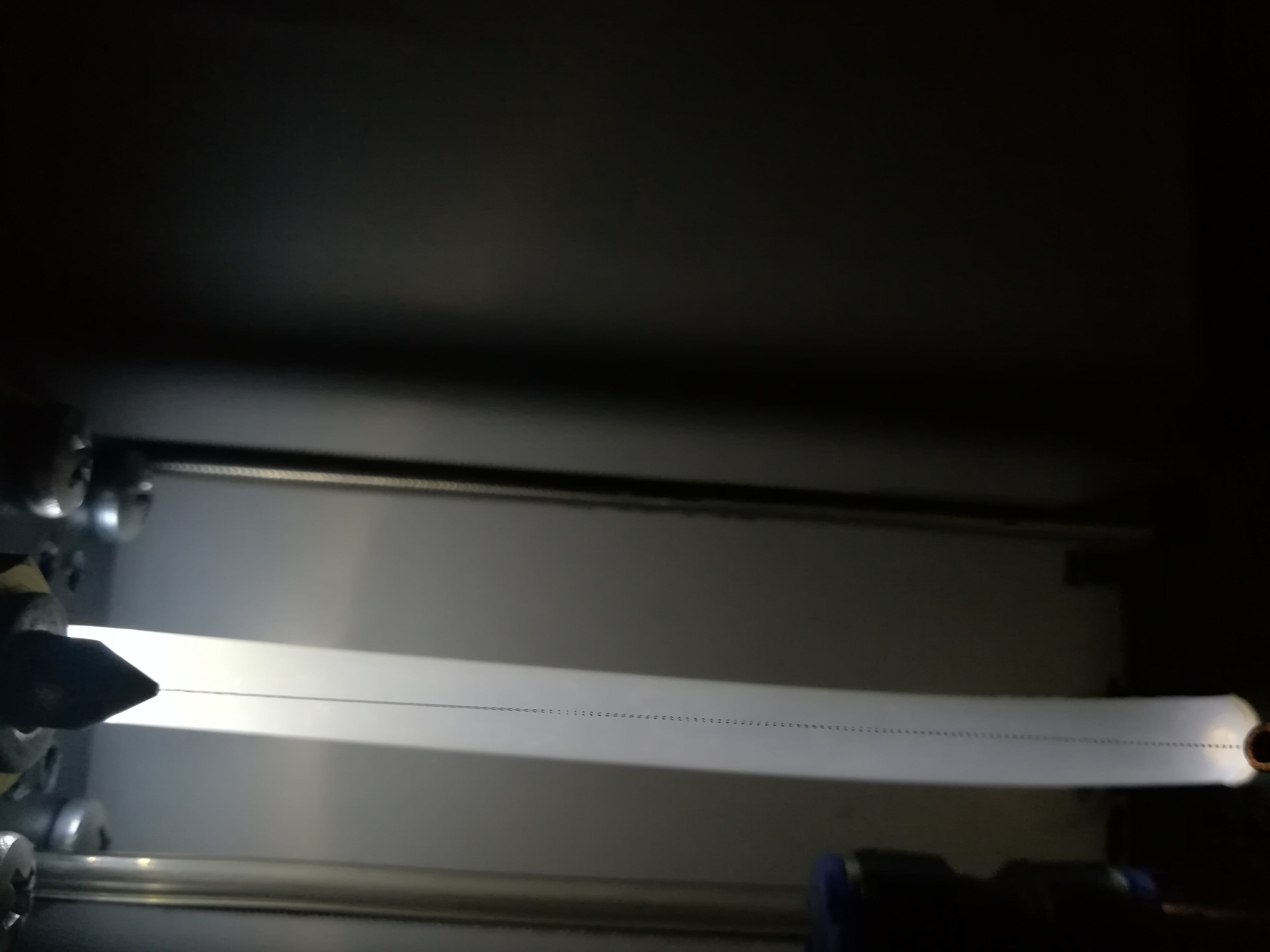
And by doing so you get a nice line of droplets after a few centimeters even with 40kHz. Time will tell if they are suitable for charging and deflecting, but at the first glance, they look quite OK.
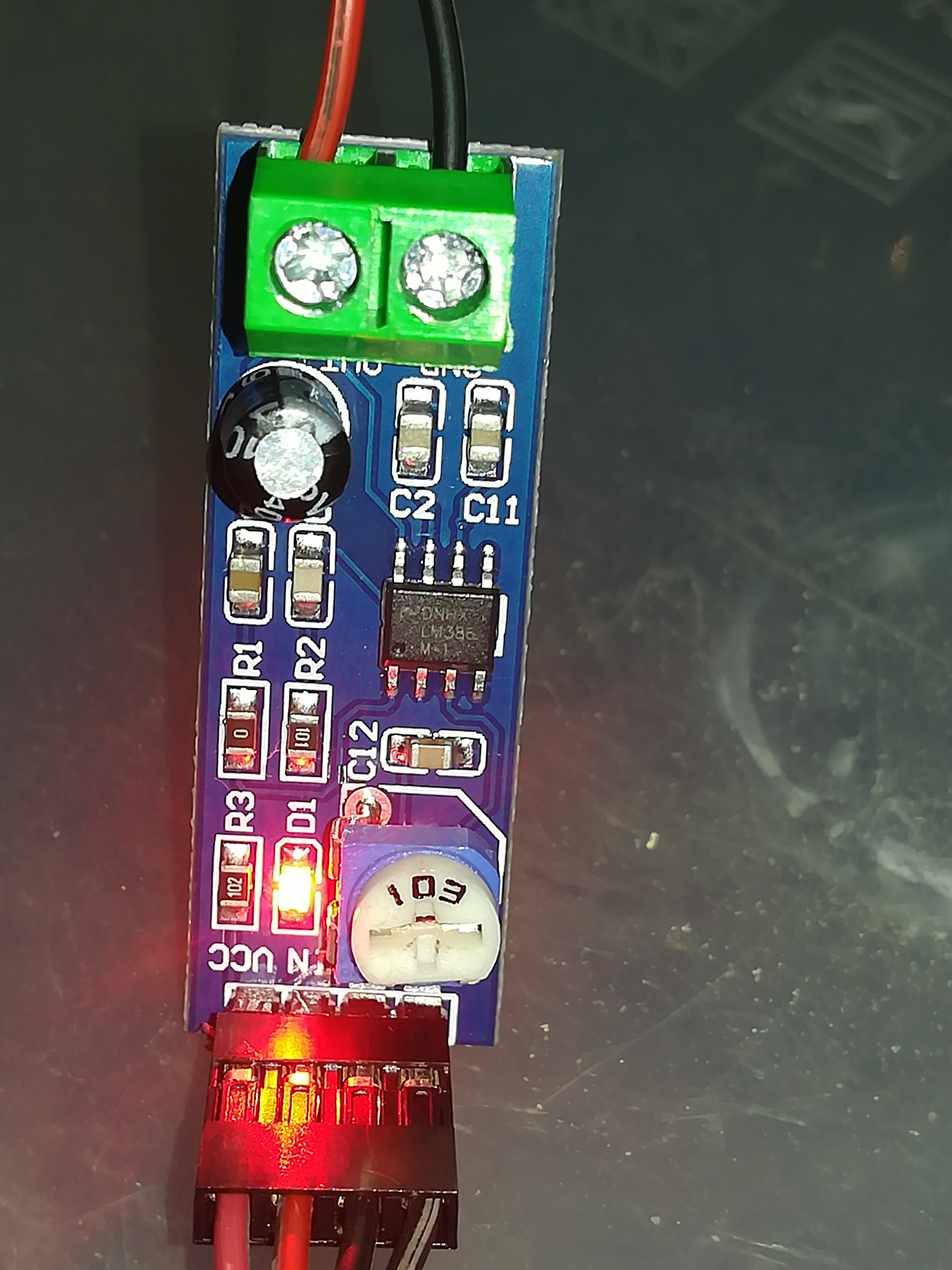
For driving the piezo rings I used a small LM386 amplifier. I also tried another more powerful amplifier and it worked well, too. It was even possible to drive the piezo and split the stream with the signal generator on its own and "tune" the stream by adjusting the output voltage.
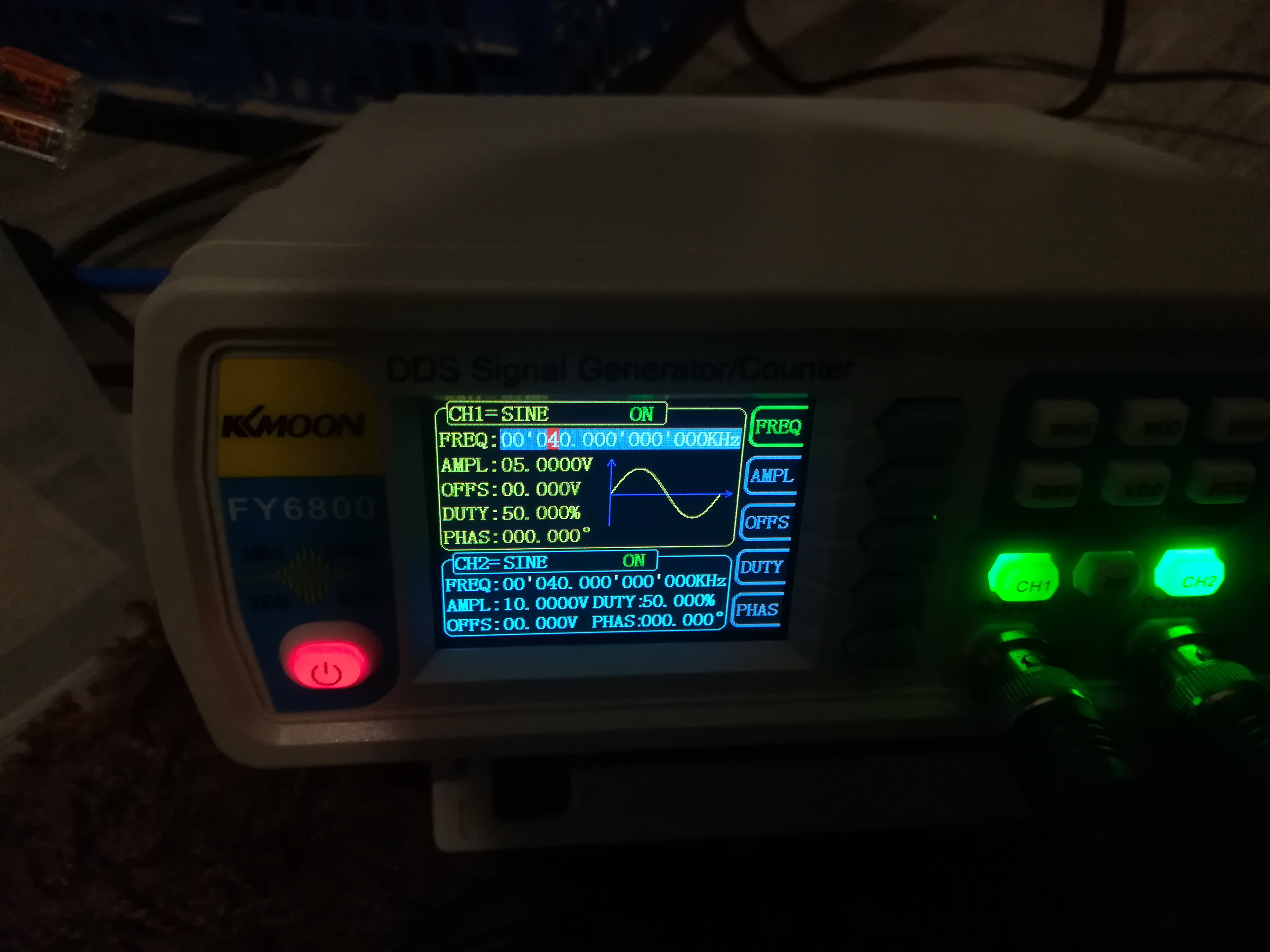
I connected the amplifier to CH1 and an LED to CH2 and set both channels to 40kHz sine wave. While being a diode the LED should only turn on at one side of the curve and therefore blink with just 20kHz - I also tried a 40kHz non-zero crossing square wave and it worked, but it seems like the droplets look a bit different. Driving the piezo rings with the same square wave also worked, but I guess driving them with a sine wave will be better because by doing so they can flex back and forth instead of just flexing between the resting and bend positions.
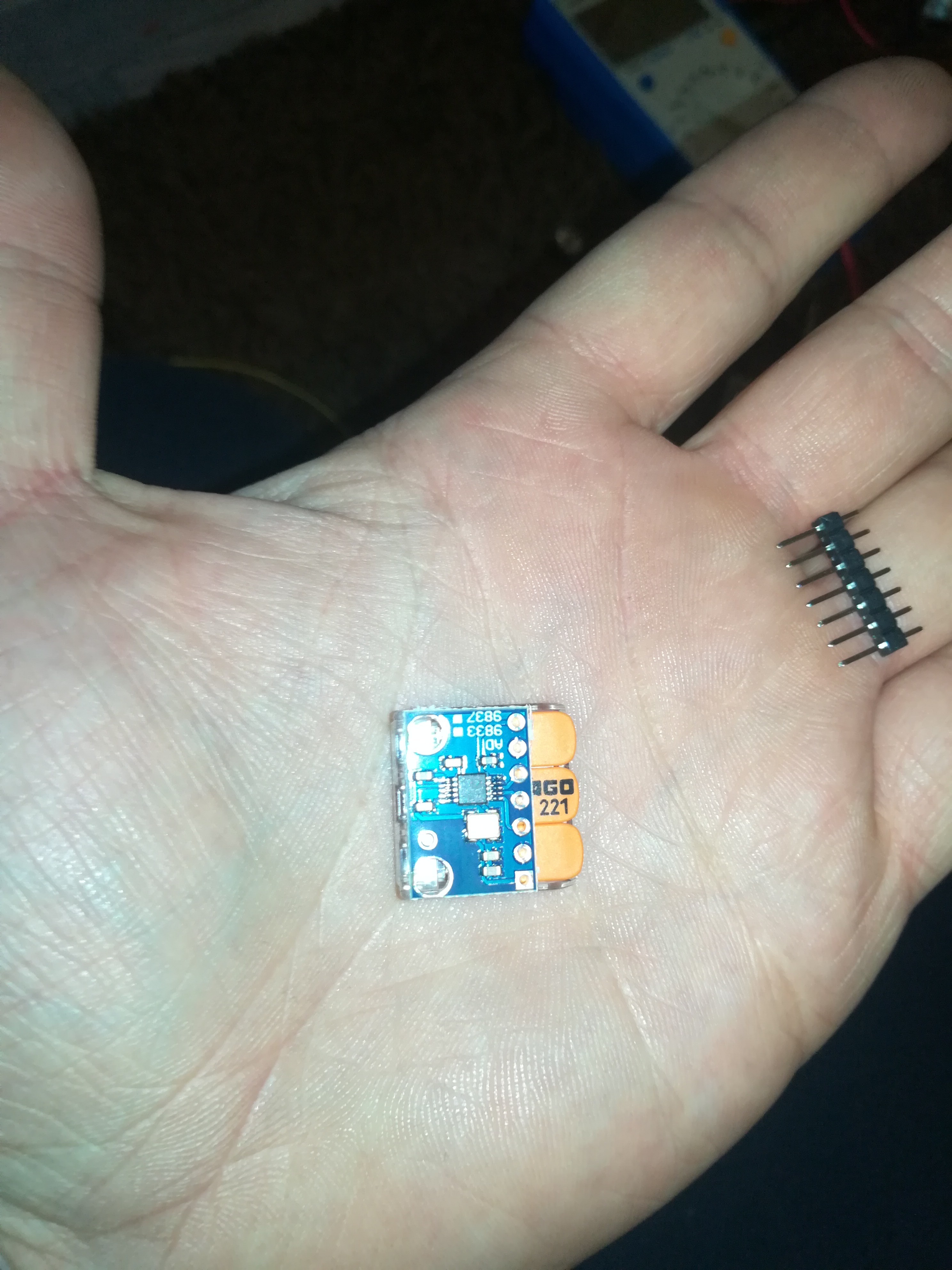
Next, I want to drive the LED directly from an Arduino pin and use an AD9833 to generate the sine wave for the LM386 amplifier.
 Dominik Meffert
Dominik Meffert
Discussions
Become a Hackaday.io Member
Create an account to leave a comment. Already have an account? Log In.